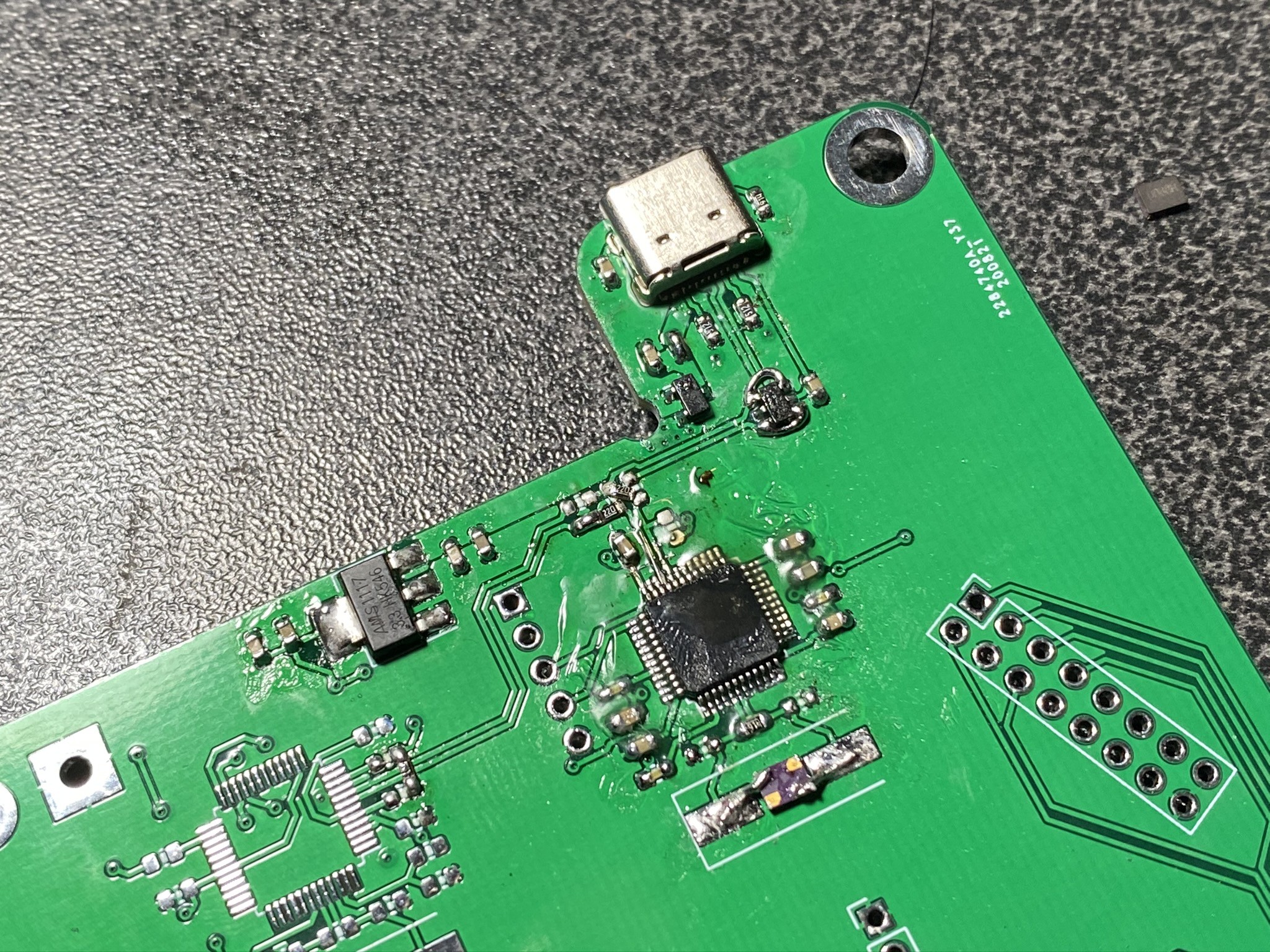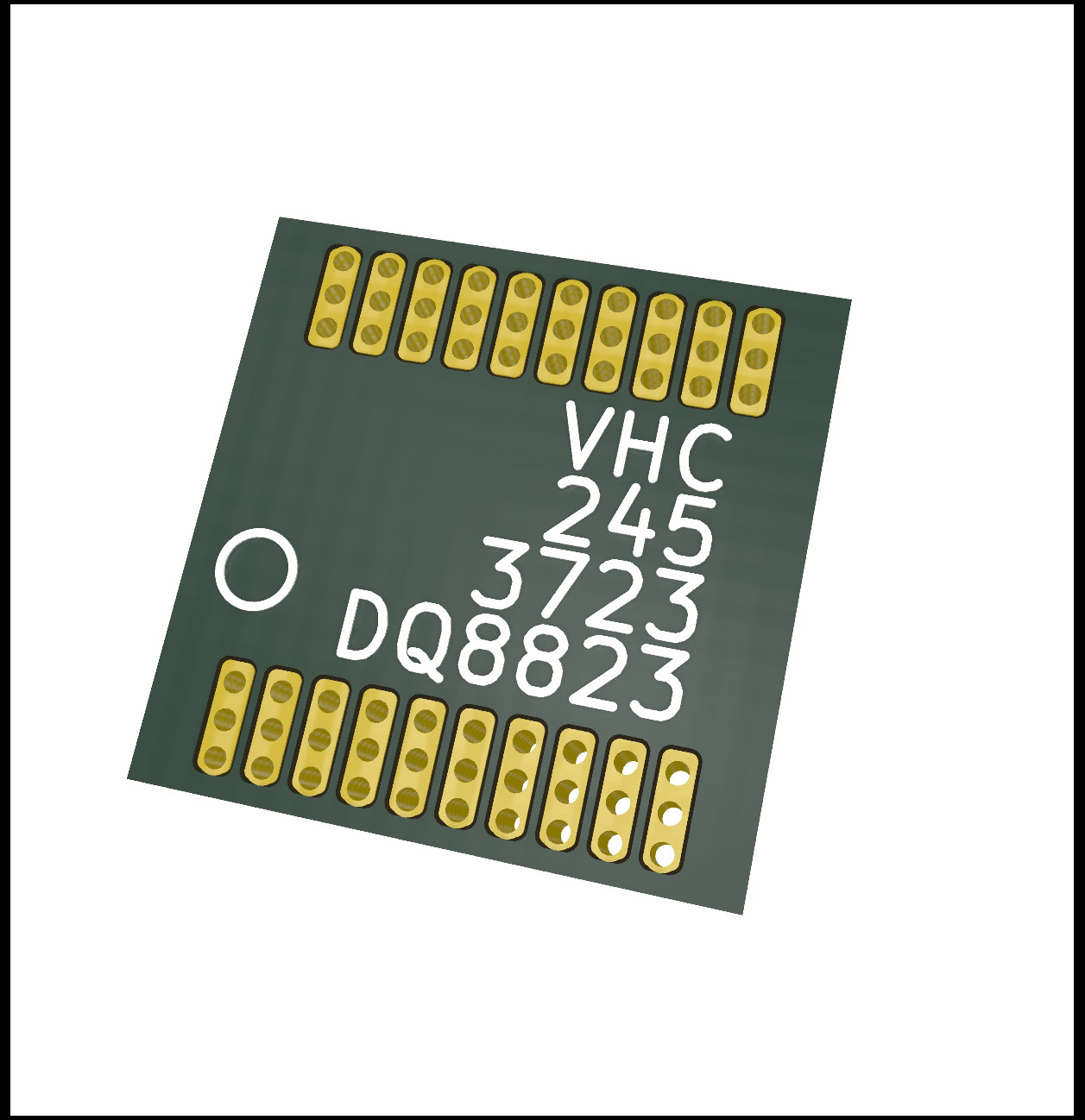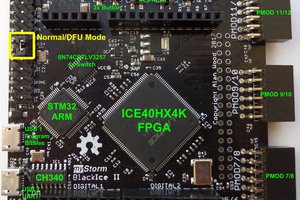This project consist of 3 sub-projects
- Enabling Input
- All the pins of the HUB75 connectors are connected to outputs of
level shifters. They need to be replaces by something that allows bidirectional data communication
- All the pins of the HUB75 connectors are connected to outputs of
- Designing the PCB
- It shall provide programming via JTAG, as well as serve as a breakout board for all the signal.
- Porting Code
- LiteX already provides a platform definition written in Migen. I would like to port it to nMigen.
 marble
marble

 After finding and fixing the mistakes over the weekend I successfully flashed the versaloon firmware onto the STM32.
After finding and fixing the mistakes over the weekend I successfully flashed the versaloon firmware onto the STM32.








 I also sorted the schematic. It's very straight forward.
I also sorted the schematic. It's very straight forward.




 I tested the setup with the
I tested the setup with the 



 Bharbour
Bharbour
 deʃhipu
deʃhipu

 Kent
Kent